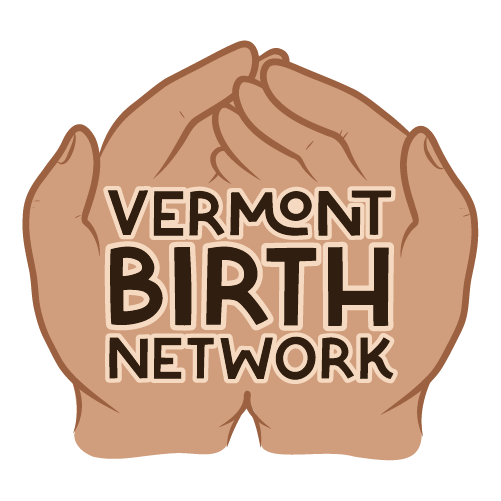
Body Workers
There are many different types of bodywork techniques and therapies, such as massage or Craniosacral therapy, these services designed to promote physical and mental well-being. Body work techniques vary in their approaches, goals, and methods.
-

Northern Lights Family Chiropractic
-

Amy LePage
-

Little Seeds Wellness
-

Core Connections Abdominal Centered Therapy
-

This Mother's Road
-

Adena Rose Ayurveda
-

Sarah Wylie
-

Vermont Doula Company

Search by Location
Frequently Asked Questions
-
There are many different types of bodywork techniques and therapies designed to promote physical and mental well-being. These techniques vary in their approaches, goals, and methods. Here are some of the most common types of bodywork:
Massage Therapy: Massage involves the manipulation of soft tissues in the body, such as muscles and fascia, to promote relaxation, reduce muscle tension, and relieve pain. Various styles of massage exist, including Swedish, deep tissue, sports, and hot stone massage.
Reflexology: Reflexology focuses on applying pressure to specific points on the hands, feet, and ears, which correspond to different organs and systems in the body. It aims to promote relaxation and improve overall health.
Rolfing (Structural Integration): Rolfing is a form of bodywork that aims to improve posture and alignment through deep tissue manipulation. It often involves a series of sessions to achieve lasting changes.
Craniosacral Therapy: This gentle therapy involves the manipulation of the craniosacral system (the membranes and cerebrospinal fluid surrounding the brain and spinal cord) to promote relaxation and relieve tension.
Myofascial Release: Myofascial release focuses on releasing tension and restrictions in the fascia, the connective tissue that surrounds muscles and organs. It can help alleviate pain and improve mobility.
Shiatsu: Shiatsu is a Japanese form of massage that involves applying pressure to specific points along the body's meridians (energy pathways) to balance energy and promote overall health.
Thai Massage: Thai massage combines stretching, compression, and passive yoga-like movements to promote relaxation and flexibility. It is often performed fully clothed on a mat on the floor.
These are just a few examples of the many bodywork modalities available. Different techniques may be more suitable for specific health goals or personal preferences, so it's essential to explore and find the one that works best for you. Always consult with a qualified practitioner when seeking bodywork therapies for specific health concerns.
-
Bodywork during the perinatal period, which includes pre-conception, pregnancy, childbirth, and the postpartum period, can offer various benefits for expectant and new parents. Here are some reasons why individuals might consider bodywork during this time:
Pain Relief: Many pregnant individuals experience discomfort and musculoskeletal issues during pregnancy due to the changes in their bodies, including weight gain and shifts in posture. Bodywork techniques can help alleviate these discomforts, such as lower back pain, sciatica, and hip pain.
Stress Reduction: Pregnancy and the postpartum period can be physically and emotionally taxing. Bodywork therapies like massage and reflexology can provide relaxation and reduce stress, which can benefit both the pregnant person and their baby.
Improved Circulation: Some bodywork techniques, such as massage, can help improve circulation, which can be especially important during pregnancy when increased blood flow is needed to support the growing fetus.
Reduced Swelling: Edema (swelling) is common during pregnancy, particularly in the extremities. Techniques like lymphatic drainage massage can help reduce swelling and improve overall comfort.
Pelvic Alignment: Some forms of bodywork can help maintain proper pelvic alignment, which can be important for the comfort of the pregnant person and the baby's positioning during birth.
Preparation for Labor: Certain bodywork methods, such as prenatal yoga and relaxation techniques, can help prepare birthing people both physically and mentally for labor and childbirth. They can teach breathing techniques and relaxation methods that may be beneficial during labor.
Postpartum Recovery: After childbirth, bodywork can assist with postpartum recovery. It can help the body heal from the physical stresses of childbirth, aid in the resolution of any lingering musculoskeletal issues, and provide relaxation for the new parent.
Emotional Support: Bodywork can also offer emotional support during the perinatal period. Pregnancy and the postpartum period can bring about a range of emotions, and therapies like massage or craniosacral therapy can provide a safe and calming space for emotional release and relaxation.
Bonding and Self-Care: Taking time for bodywork sessions during pregnancy and postpartum can be a form of self-care that allows the expectant or new parent to connect with their body and bond with the growing baby.
It's important to note that not all bodywork modalities are suitable during pregnancy, so it's essential to work with a qualified practitioner experienced in perinatal care. Always consult with your healthcare provider before starting any new bodywork or massage therapy during pregnancy to ensure that it's safe for you and your baby. Additionally, the specific needs and preferences of each individual will vary, so the choice of bodywork should be tailored to their unique circumstances.
